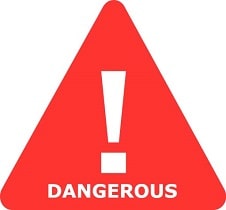Is EINECS 283-625-3 Safe in Breastfeeding
Question
I am a breastfeeding mother and i want to know if it is safe to use EINECS 283-625-3? Is EINECS 283-625-3 safe for nursing mother and child? Does EINECS 283-625-3 extracts into breast milk? Does EINECS 283-625-3 has any long term or short term side effects on infants? Can EINECS 283-625-3 influence milk supply or can EINECS 283-625-3 decrease milk supply in lactating mothers?
EINECS 283-625-3 lactation summary

- DrLact safety Score for EINECS 283-625-3 is 7 out of 8 which is considered Dangerous as per our analyses.
- A safety Score of 7 indicates that usage of EINECS 283-625-3 may cause toxic or severe side effects in breastfed baby.
- Our study of different scientific research indicates that EINECS 283-625-3 may cause moderate to high side effects or may affect milk supply in lactating mother.
- Our suggestion is to use safer alternate options rather than using EINECS 283-625-3 .
- Usage of EINECS 283-625-3 is in contradiction to breastfeeding hence if it is must to use EINECS 283-625-3 and there is no better alternative available then breastfeeding shall be stopped permanently or temporarily.
- Score calculated using the DrLact safety Version 1.2 model, this score ranges from 0 to 8 and measures overall safety of drug in lactation. Scores are primarily calculated using publicly available case studies, research papers, other scientific journals and publically available data.
Answer by Dr. Ru: About EINECS 283-625-3 usage in lactation
Roots and leaves are used. It contains allantoin, tannins, and pyrrolizidine alkaloids. Unproved effect: topical anti-inflammatory. Indications after Commission E of German Ministry of Health: contusion with undamaged skin. Do not apply on the breast. Pyrrolizidine alkaloids are highly hepatotoxic and poses an increased risk of liver carcinoma and cirrhosis to both the mother and the infant. Consider not to use it at all.
Answer by DrLact: About EINECS 283-625-3 usage in lactation
EINECS 283-625-3 (Symphytum officinalis) herb and leaf contains allantoin and rosmarinic acid; EINECS 283-625-3 also contains pyrrolizidine alkaloids. EINECS 283-625-3 preparations have been used topically for pain following episiotomy and cracked, painful nipples, either as aqueous preparations or in creams and ointments.[1][2][3][4][5][6][7] Scientific evidence of effectiveness for these indications is minimal. The pyrrolizidine alkaloids in EINECS 283-625-3 can cause severe liver damage, liver cancer, mutagenicity, and even death.[8][9] For this reason, the U.S. Food and Drug Administration has banned the sale of oral EINECS 283-625-3 products in the United States. Furthermore, most sources consider topical use of EINECS 283-625-3 during breastfeeding to be contraindicated.[1][10][11] If it is used on the skin, it should only be applied to intact skin away from the breast on the smallest area of skin possible, and for a limited duration. It is particularly important to ensure that the infant not come into direct contact with the areas of skin that have been treated, because ingestion may cause severe liver damage. Dietary supplements do not require extensive pre-marketing approval from the U.S. Food and Drug Administration. Manufacturers are responsible to ensure the safety, but do not need to the safety and effectiveness of dietary supplements before they are marketed. Dietary supplements may contain multiple ingredients, and differences are often found between labeled and actual ingredients or their amounts. A manufacturer may contract with an independent organization to verify the quality of a product or its ingredients, but that does certify the safety or effectiveness of a product. Because of the above issues, clinical testing results on one product may not be applicable to other products. More detailed information #about dietary supplements# is available elsewhere on the LactMed Web site.
Alternate Drugs
Methylprednisolone(Safe)
Betamethasone(Low Risk)
Hydrocortisone(Safe)
Betamethasone, Topical(Low Risk)
Fluticasone, Inhaled(Safe)
Fluticasone, Topical(Safe)
Natalizumab(Low Risk)
Ciclesonide(Safe)
Hydrocortisone, Topical(Safe)
Flunisolide(Safe)
Dexamethasone(Low Risk)
Deflazacort(Low Risk)
Dexamethasone, Topical(Low Risk)
Prednisone(Safe)
Prednisolone(Safe)
Clobetasol(Safe)
Ginger(Safe)
Alfalfa(Unsafe)
Cranberry(Safe)
Aloe(Low Risk)
Dong Quai(Low Risk)
Melatonin(Safe)
Echinacea(Low Risk)
Coriander(Safe)
Rhubarb(Low Risk)
Calendula(Safe)
Peppermint(Safe)
Ginkgo(Low Risk)
Licorice(Unsafe)
Milk Thistle(Safe)
Sage(Low Risk)
Cumin(Safe)
Caraway(Safe)
Hops(Low Risk)
Levocarnitine(Safe)
Chamomile(Safe)
Glucosamine(Safe)
Lecithin(Safe)
Resveratrol(Safe)
Lavender(Low Risk)
Fenugreek(Safe)
Basil(Unsafe)
Chasteberry(Unsafe)
Coenzyme Q10(Low Risk)
Castor(Unsafe)
Nutmeg(Low Risk)
Oregano(Low Risk)
Beta-Carotene(Safe)
Garlic(Safe)
Aloe(Low Risk)
Dong Quai(Low Risk)
Echinacea(Low Risk)
Coriander(Safe)
Rhubarb(Low Risk)
Calendula(Safe)
Peppermint(Safe)
Ginkgo(Low Risk)
Licorice(Unsafe)
Milk Thistle(Safe)
Sage(Low Risk)
Cumin(Safe)
Caraway(Safe)
Hops(Low Risk)
Chamomile(Safe)
Lecithin(Safe)
Resveratrol(Safe)
Lavender(Low Risk)
Fenugreek(Safe)
Basil(Unsafe)
Chasteberry(Unsafe)
Castor(Unsafe)
Nutmeg(Low Risk)
Oregano(Low Risk)
Garlic(Safe)
Ginger(Safe)
Cranberry(Safe)
Aloe(Low Risk)
Dong Quai(Low Risk)
Echinacea(Low Risk)
Coriander(Safe)
Rhubarb(Low Risk)
Calendula(Safe)
Peppermint(Safe)
Ginkgo(Low Risk)
Licorice(Unsafe)
Milk Thistle(Safe)
Sage(Low Risk)
Cumin(Safe)
Caraway(Safe)
Hops(Low Risk)
Chamomile(Safe)
Lecithin(Safe)
Lavender(Low Risk)
Fenugreek(Safe)
Basil(Unsafe)
Resveratrol(Safe)
Chasteberry(Unsafe)
Castor(Unsafe)
Nutmeg(Low Risk)
Garlic(Safe)
Oregano(Low Risk)
Ginger(Safe)
Cranberry(Safe)
